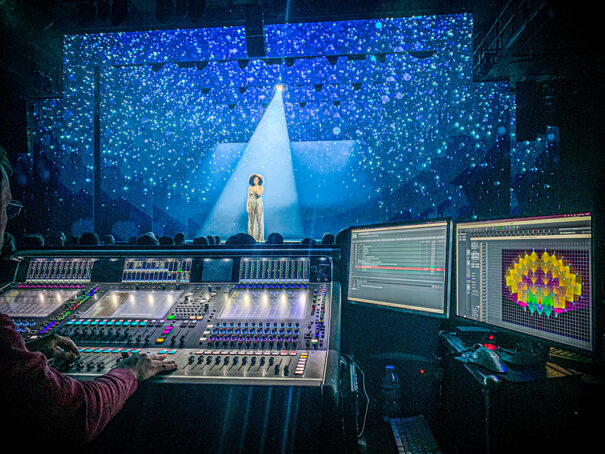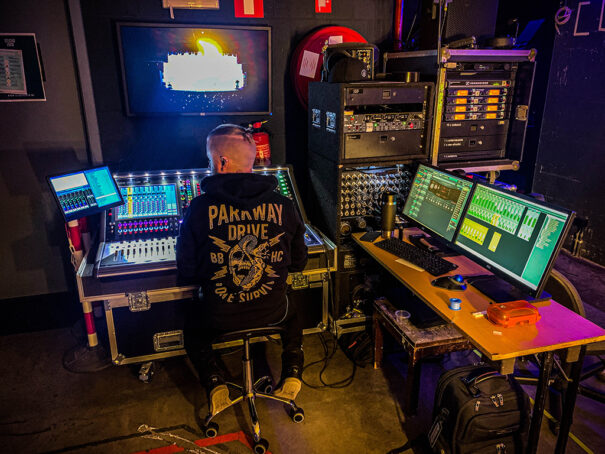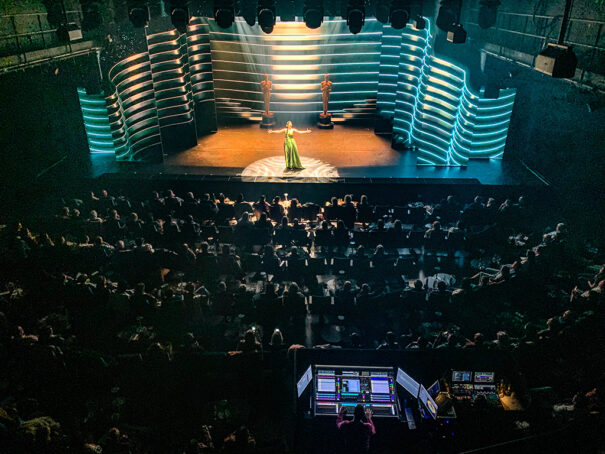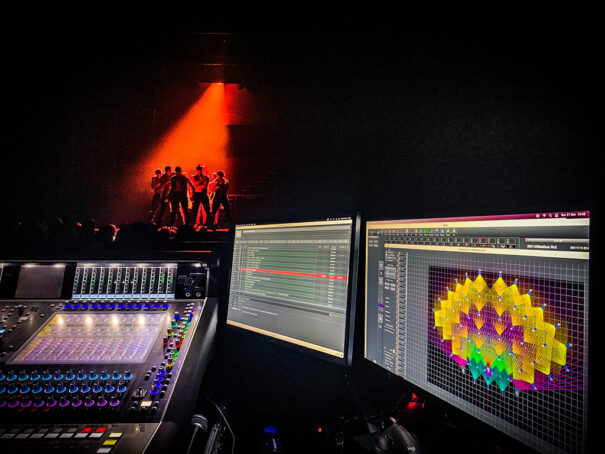TiMax proporciona una nueva experiencia musical para las noches de Amberes
Studio Zuid ha adquirido un procesador TiMax SoundHub-S64 con E/S MADI para los espectáculos que ofrece en su auditorio semicircular. La primera obra en la que se ha utilizado esta solución ha sido en una producción inmersiva de El Guardaespaldas.
Studio Zuid ha transformado su oferta de entretenimiento con la adquisición de un procesador TiMax SoundHub-S64 con E/S MADI. El auditorio semicircular en forma de anfiteatro de este local ubicado en Amberes (Belgium) acoge una amplia variedad de experiencias musicales, la primera de las cuales fue una producción inmersiva de El Guardaespaldas, que se hizo famosa por la película de Whitney Houston y su premiada banda sonora.
El diseñador de sonido y director de audio del local, Erik Loots, tenía una gran visión del tipo de producción que necesitaba el local y el nivel de flexibilidad de audio que quería para espectáculos como El Guardaespaldas.
“TiMax era esencial. Lo necesitaba por su capacidad para tratar el audio tanto basado en canales como en objetos. Siempre he sido un gran seguidor de TiMax y de su flexibilidad cuando se trata de aplicaciones inmersivas, y como este espectáculo se mezcló completamente en inmersión, era la herramienta perfecta para el trabajo”.
Esta solución proporciona el motor de inmersión principal para el programa de producción de Studio Zuid y facilita la mezcla espacial de toda la reproducción multicanal y la localización de las voces en directo en el local.
El contenido del espectáculo de El Guardaespaldas incluye pistas musicales grabadas en inmersión en los estudios Galaxy by Wilfried Van Baelen, donde la acústica de la sala se suma a las diferentes reverberaciones grabadas en formato Auro3D.
La versatilidad de TiMax, con su renderización espacial adaptativa, fue lo que hizo que fuera la elección correcta para los retos de inmersión específicos del local. El comedor, with capacity for 550 comensales, estaba diseñado para seguir de cerca los contornos del escenario semicircular, por lo que la capacidad de TiMax para trabajar eficazmente con una configuración mínima de altavoces de prácticamente cualquier marca y tipo era clave.
Con un tiempo de ensayo y tecnología limitados, el flujo de trabajo de TiMax fue fundamental para lograr un rápido ajuste y una mezcla perfecta de todos los elementos del escenario, el sonido envolvente y los elementos para un híbrido entorno inmersivo basado en objetos y canales.
Para adaptar la amplia zona del público se han instalado diferentes equipos de Coda Audio. Hay tres conjuntos idénticos de ocho altavoces Coda N-Ray. Los colgantes izquierdo y derecho también cuentan con el soporte de subgraves de tres subwoofers N-Ray volados en una configuración cardioide inversa, apuntando 45 grados hacia fuera, y también hay outfills formados por seis gabinetes N-Ray.
El relleno lo proporcionan cuatro Coda G712 apilados a la izquierda y a la derecha, mientras que en la parte delantera del escenario se han ubicado ocho equipos Coda HOPS8 de relleno frontal apoyados por otros tres G712 volados también configurados en L/C/R.
Thomas Coene se encargó de las mezclas con una mesa Digico SD7 Quantum, a través de la cual se combinaron las voces en directo con la reproducción de música desde un sistema Cubase redundante de 128 canales.
Un sistema Qlab redundante de 64 canales también se encarga de la reproducción de efectos de sonido utilizando comandos MIDI para recuperar escenas e instantáneas en TiMax y la mesa de mezclas. Se utilizó un sistema de plugins Waves Multi-Rack para reverberaciones externas, ecualización y compresión.
La difícil configuración del audio se simplificó gracias a la estructura y el flujo de trabajo de la plataforma TiMax. Como explica Erik, “poder cambiar manualmente la matriz de nivel y retardo entre las entradas y las salidas, me permitió manipular las definiciones de la imagen del set sobre la marcha y marcar los ajustes personalizados para el aspecto del espectáculo basado en los canales, fue un salvavidas, especialmente por el escaso tiempo de producción y ensayo que teníamos”.
Did you like this article?
Subscribe to our NEWSLETTER and you won't miss anything.






